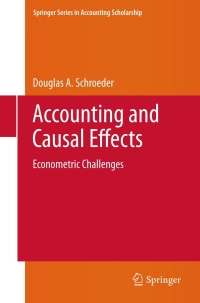The continuous variables are Number of books in home reported by parents in fall of kindergarten, Childrens reading scores at the end of kindergarten, Number of Siblings in Home.
3. For continuous variables listed above, run descriptive statistics to find the mean, standard deviation and range. Create a histogram for each continuous variable. Write in words what the means and standard deviations are for each continuous variable. Explain your answer.
Table 1. Percentage distribution of children in kindergarten for the first time in the 2010-11 school year, by child, household, and school characteristics: School year 2010-11 Characteristics Population Percent Total 3,472,902 100 Child's sex Male 1,779,792 51 Female 1,693,109 49 Child's birth month and year Born before January 2004 4,930 # Born January-August 2004 123,174 4 Bom September-December 2004 890,822 26 Bom January-April 2005 1,083,961 31 Born May-August 2005 1,117,224 32 Bom September-December 2005 244,383 7 Bom after December 2005 8,408 # Child's race/ethnicity White, non-Hispanic 1,844,241 53 Black, non-Hispanic 458,058 13 Hispanic 820,424 24 Asian, non-Hispanic 142,096 4 Native Hawaiian or other Pacific Islander, non-Hispanic 13,466 American Indian or Alaska Native, non-Hispanic 42,970 Two or more races, non-Hispanic 149,097 Poverty status Income below the federal poverty level 707,334 25 Income between 100 and 199 percent of the federal poverty level 635,889 22 Income at or above 200 percent of the federal poverty level 1,519,452 53 Parents' highest level of education Less than high school diploma or equivalent 308,586 9 High school diploma or equivalent 706,967 20 Some college or vocational degree 1,122,354 32 Bachelor's degree 693,651 20 Graduate professional school 630,113 18 * 4 Parents' highest level of education Less than high school diploma or equivalent 308,586 High school diploma or equivalent 706,967 20 Some college or vocational degree 1,122,354 32 Bachelor's degree 693,651 20 Graduate/professional school 630,113 18 Family type in fall 2010 Two parents 2,432,987 76 One parent 715,725 22 Other 69,293 2 Primary home language Not English 514,014 15 English 2,909,750 84 Multiple home languages, no primary language identified 39,019 1 School type in fall 2010 Public 3,074,220 89 Private 398,682 11 # Rounds to zero Black, non-Hispanic includes African American Hispanic includes Latino. 2 Poverty status is based on preliminary U.S. Census thresholds for 2010, which identify incomes determined to meet household needs, given size. For example, in 2010 a family of two was below the poverty threshold if its income was lower than $14,220. Two parents includes two biological parents, two adoptive parents, and one biological/adoptive parent and one other parent/ partner. One parent refers to one biological or adoptive parent only. Other refers to related and/or unrelated guardians NOTE: Estimates based on a preliminary version of the Early Childhood Longitudinal Study, Kindergarten Class of 2010-11 (ECLS-K:2011) restricted-use data file. Estimates produced with the final restricted-use data file, or the public-use data file, may vary. Estimates were weighted by Wi_2P0. Detail may not sum to total due to rounding and/or missing data. SOURCE: U.S. Department of Education, National Center for Education Statistics, Early Childhood Longitudinal Study, Kindergarten Class of 2010-11 (ECLS-K:2011) Preliminary Restricted-Use Data File. Table 1. Percentage distribution of children in kindergarten for the first time in the 2010-11 school year, by child, household, and school characteristics: School year 2010-11 Characteristics Population Percent Total 3,472,902 100 Child's sex Male 1,779,792 51 Female 1,693,109 49 Child's birth month and year Born before January 2004 4,930 # Born January-August 2004 123,174 4 Bom September-December 2004 890,822 26 Bom January-April 2005 1,083,961 31 Born May-August 2005 1,117,224 32 Bom September-December 2005 244,383 7 Bom after December 2005 8,408 # Child's race/ethnicity White, non-Hispanic 1,844,241 53 Black, non-Hispanic 458,058 13 Hispanic 820,424 24 Asian, non-Hispanic 142,096 4 Native Hawaiian or other Pacific Islander, non-Hispanic 13,466 American Indian or Alaska Native, non-Hispanic 42,970 Two or more races, non-Hispanic 149,097 Poverty status Income below the federal poverty level 707,334 25 Income between 100 and 199 percent of the federal poverty level 635,889 22 Income at or above 200 percent of the federal poverty level 1,519,452 53 Parents' highest level of education Less than high school diploma or equivalent 308,586 9 High school diploma or equivalent 706,967 20 Some college or vocational degree 1,122,354 32 Bachelor's degree 693,651 20 Graduate professional school 630,113 18 * 4 Parents' highest level of education Less than high school diploma or equivalent 308,586 High school diploma or equivalent 706,967 20 Some college or vocational degree 1,122,354 32 Bachelor's degree 693,651 20 Graduate/professional school 630,113 18 Family type in fall 2010 Two parents 2,432,987 76 One parent 715,725 22 Other 69,293 2 Primary home language Not English 514,014 15 English 2,909,750 84 Multiple home languages, no primary language identified 39,019 1 School type in fall 2010 Public 3,074,220 89 Private 398,682 11 # Rounds to zero Black, non-Hispanic includes African American Hispanic includes Latino. 2 Poverty status is based on preliminary U.S. Census thresholds for 2010, which identify incomes determined to meet household needs, given size. For example, in 2010 a family of two was below the poverty threshold if its income was lower than $14,220. Two parents includes two biological parents, two adoptive parents, and one biological/adoptive parent and one other parent/ partner. One parent refers to one biological or adoptive parent only. Other refers to related and/or unrelated guardians NOTE: Estimates based on a preliminary version of the Early Childhood Longitudinal Study, Kindergarten Class of 2010-11 (ECLS-K:2011) restricted-use data file. Estimates produced with the final restricted-use data file, or the public-use data file, may vary. Estimates were weighted by Wi_2P0. Detail may not sum to total due to rounding and/or missing data. SOURCE: U.S. Department of Education, National Center for Education Statistics, Early Childhood Longitudinal Study, Kindergarten Class of 2010-11 (ECLS-K:2011) Preliminary Restricted-Use Data File








